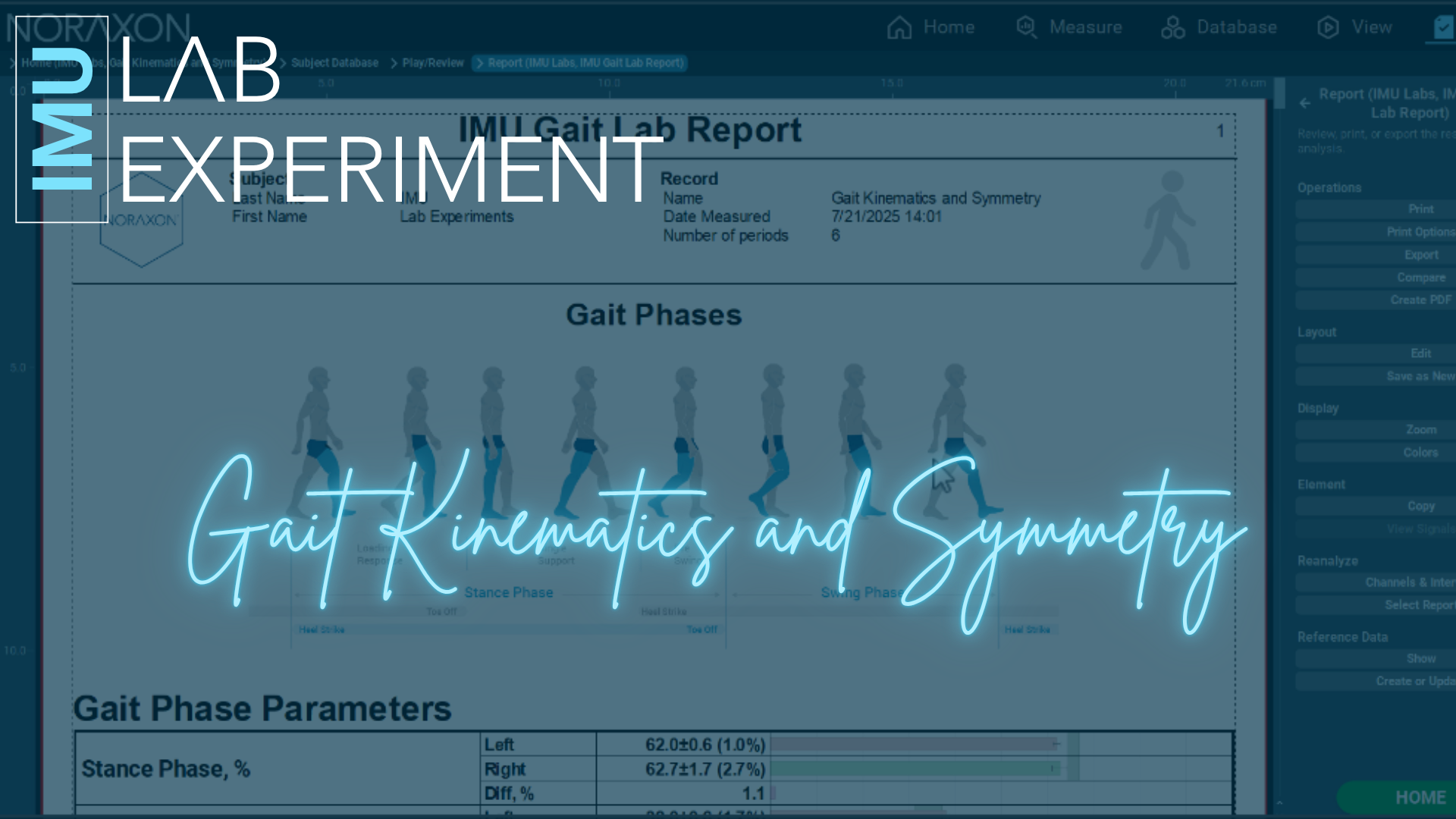
Gait Kinematics and Symmetry
In this lab, students will use an IMU-based motion capture system to measure and analyze lower-limb movement throughout the gait cycle. By comparing joint angles and timing between the left and right sides, they will assess gait symmetry and explore the biomechanical factors that influence walking patterns.
Why Analyze
Gait Kinematics & Symmetry?
Symmetrical gait patterns typically indicate balanced muscle activation, joint coordination, and neuromuscular control, while asymmetries can signal compensations, weakness, or injury.
By examining parameters such as stride timing, joint angles, and phase durations, clinicians and researchers can identify subtle deviations that may lead to overuse injuries, impaired performance, or mobility issues. This analysis not only aids in diagnosing and tracking rehabilitation progress but also provides valuable insights for optimizing movement efficiency in both healthy and clinical populations.


Learning Objectives for Students
Identification of Biomechanical Events
Students will interpret the collected data to identify key gait events such as heel strike, toe-off, and peak flexion or extension.
Data Collection & Analysis
Students will use an IMU-based motion capture system to analyze lower-limb kinematics and record joint angle data throughout the gait cycle.
Symmetry Evaluation & Interpretation
By comparing temporal and angular parameters between the left and right sides, students will assess gait symmetry, explore potential causes of asymmetry, and reinforce concepts related to kinematic analysis, movement variability, and gait mechanics in both healthy and clinical populations.

